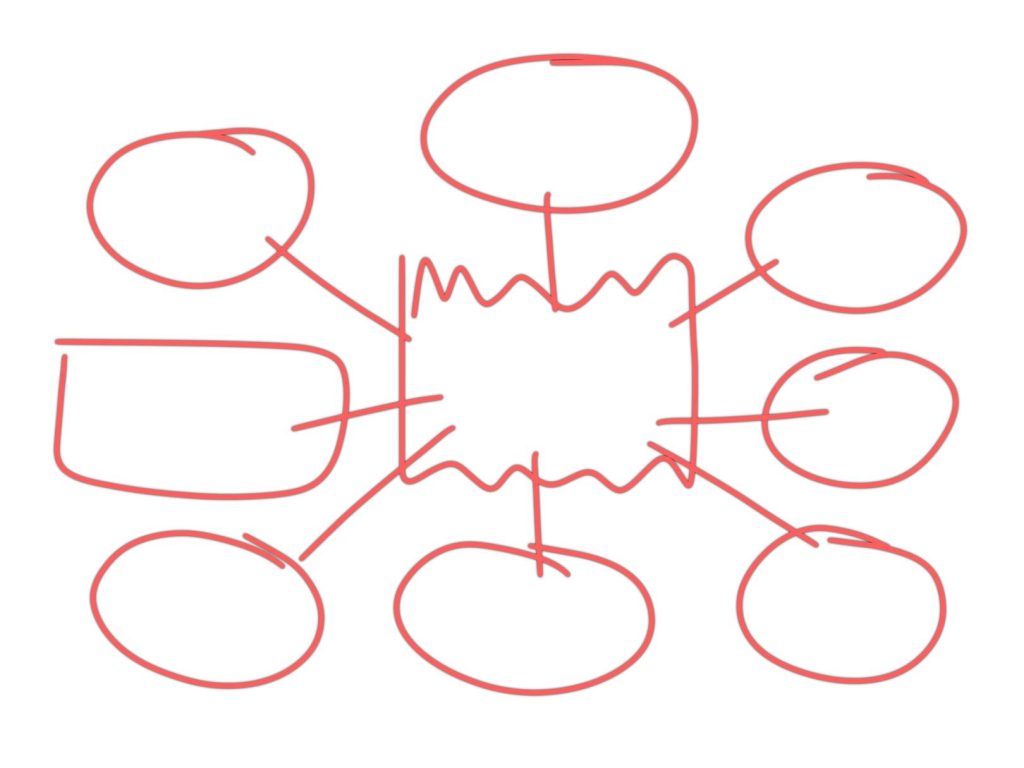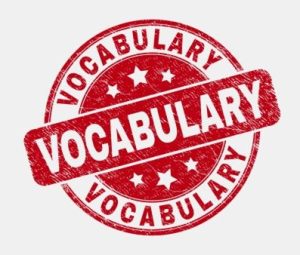شبكة الأفكار: لعبة تحري القراءة
عندما نقرأ القصص غير الخيالية، فإن الكلمات الموجودة على الصفحة تحكي جزءًا فقط من القصة، فالمعنى الحقيقي غالبًا ما يكمن تحت السطح. إن مساعدة طفلك على اكتشاف الأفكار الخفية في النص يبني مهارات التفكير النقدي ويقوي فهم القراءة. إن "القراءة بين السطور" تشبه أن تكون محققًا يبحث عن أدلة لاكتشاف الأفكار غير المذكورة مباشرة. سيوجه النشاط التالي طفلك في إجراء الروابط واستخلاص الاستدلالات والتفكير بعمق فيما يقرأه.
الاتجاهات
ما تحتاجه:
- كتاب غير روائي أو درس بيبل
- قطعة ورق كبيرة أو سبورة بيضاء
- أقلام تلوين أو أقلام تلوين
كيفية اللعب:
1. اقرأ جزءًا من الكتاب أو درس بيبل معًا.
- اختر مقطعاً يحتوي على حقائق أو أوصاف أو أحداث مثيرة للاهتمام.
- شجّع طفلك على التوقف والتفكير فيما يلمح إليه المؤلف بدلاً من التصريح به مباشرة.
2. اكتب الفكرة الرئيسية في وسط الورقة.
- مثال على ذلك: إذا كنت تقرأ عن الكساد العظيم، فقد تكون الفكرة الرئيسية هي "انهار الاقتصاد، مما تسبب في معاناة الملايين."
3. اكتب حوله، في الخريطة الذهنية المشابهة للخريطة أعلاه، تخمينات استنتاجية بناءً على القرائن الموجودة في النص.
- يجب أن تتجاوز التخمينات الاستدلالية ما هو واضح. على سبيل المثال، إذا ذكر النص "وقفت العائلات في طوابير طويلة في مطابخ الحساء" يمكن أن يكون التخمين "فقد الكثير من الناس وظائفهم ولم يتمكنوا من شراء الطعام."
- ارسم خطوطًا لربط كل تخمين استنتاجي بالفكرة الرئيسية، مما يخلق شبكة من الفهم الأعمق. (راجع الصورة أعلاه)
4. بالنسبة لكل تخمين استنتاج، ناقش المنطق واعثر على التفاصيل الداعمة في النص.
- اسألي طفلك: ما هي الكلمات أو الحقائق الواردة في النص التي قادتك إلى هذا الاستنتاج؟
- قم بتمييز العبارات التي تقدم تلميحات غير مباشرة.
5. مواصلة توسيع الشبكة وإجراء الروابط والكشف عن معانٍ أعمق.
- مثال على ذلك: إذا جاء في نص عن الاختراعات التاريخية "جعلت المطبعة الكتب أرخص وأسهل في الإنتاج" يمكن أن يكون التخمين الاستدلالي "تعلم المزيد من الناس القراءة لأن الكتب أصبحت متاحة على نطاق واسع."
الأسئلة الرئيسية التي يجب أن تطرحها على طفلك:
- ما الذي تعتقد أن المؤلف يحاول أن يخبرنا به دون أن يقوله مباشرة؟ ما هي الدلائل في النص التي ساعدتك في معرفة ذلك؟
- لماذا تعتقد أن المؤلف أدرج هذه الحقيقة أو التفصيل؟ كيف تساعد القصة أو الفكرة الرئيسية؟
- ما الذي تعتقد أنه قد يحدث بعد ذلك بناءً على ما تعلمته حتى الآن في المقال أو الكتاب؟
التكيف مع مختلف الأعمار:
الأطفال الصغار (الصفوف 2-5):
- استخدم الكتب البسيطة أو دروس Beable ذات العلاقات الواضحة بين السبب والنتيجة.
-
- مثال على ذلك: "تجمع السناجب الجوز قبل حلول فصل الشتاء."
-
-
- تخمين الاستدلال: تجمع السناجب الطعام لأنه سيكون من الصعب العثور عليه في الأشهر الباردة.
-
الأطفال المتوسطون (الصفوف 6-8):
- استخدم نصوصاً أكثر تعقيداً تتطلب تفكيراً أعمق.
-
- مثال على ذلك: "كانت سفينة تيتانيك تحمل قوارب نجاة تكفي لنصف الركاب فقط."
-
-
- تخمين الاستدلال: لم ينج العديد من الأشخاص بسبب عدم وجود قوارب نجاة كافية.
-
الأطفال الأكبر سنًا (الصفوف 9-12):
- استخدم الكتب الصعبة أو دروس بيبل التي تستكشف الأفكار المجردة.
-
- مثال على ذلك: "الشركات التي تعطي الأولوية للعمل الجماعي تميل إلى أن تكون أكثر نجاحاً."
-
-
- تخمين الاستدلال: يساعد التواصل والتعاون القويان على ازدهار الأعمال التجارية.
-
يساعد هذا النشاط الأطفال من جميع الأعمار على التفكير فيما وراء النص، مما يصقل مهاراتهم في القراءة والفهم والتحليل. ومع الممارسة، سيصبحون محققين ماهرين في القراءة، ويكتشفون المعاني الخفية في كل ما يقرؤونه!








